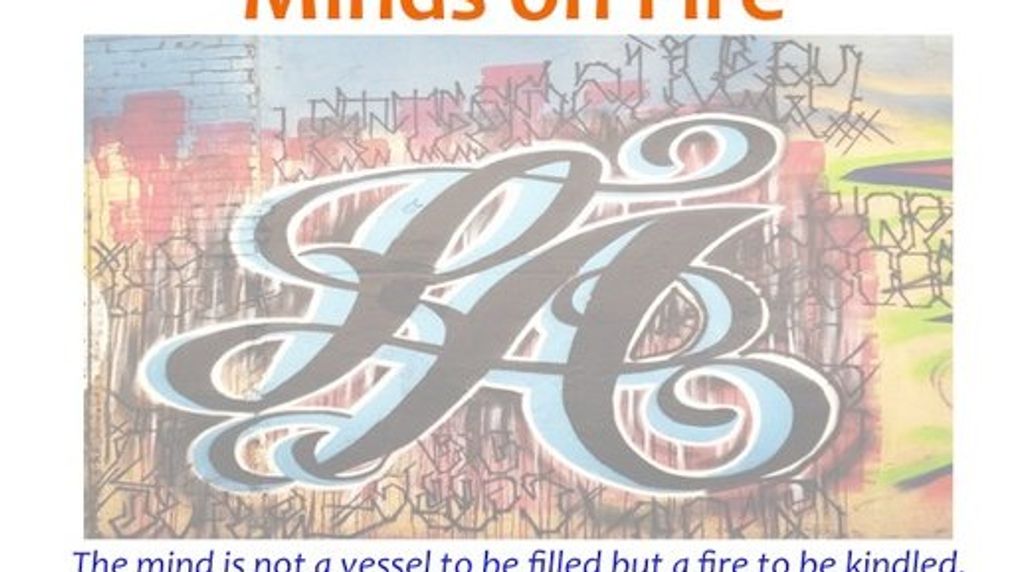Minds on Fire
Minds on Fire is in the start-up phase. However, the organization’s founder created and piloted a similar model in New York City public schools as part of Mayor Bloomberg’s inaugural NYC Civic Corps in 2009, an initiative launched in partnership with AmeriCorps VISTA to engage people across that city in volunteerism. The Minds on Fire model is shaped by the successes and learnings taken from that pilot, in combination with a deep understanding of the Los Angeles education landscape and challenges specific to our school system. In the NYC Civic Corps program, a three-member team of VISTA Volunteers engaged 197 student- and teacher-leaders and 4,721 students across 58 schools in the development and implementation of service and service learning opportunities.
Visit this organization’s website to learn more

1 Submitted Idea
- 2013 Grants Challenge
Building A Community of Leaders One Middle School Student at a Time

Minds on Fire is a new initiative that actively empowers middle school students who are most at risk for dropping out to succeed as learners and community leaders. Minds on Fire will improve middle school attendance, student engagement and achievement by empowering students to apply academic coursework to the real-world issues they care about. Students take ownership of their education by creating connections between their classroom lessons with student-led community projects. MOF will place trained ‘Mind Partners’- retired teachers and college grads - in each class to work with and support teachers. These Mind Partners will work with teachers and administrators to build frameworks for projects that fit the content and pacing of each teacher’s curriculum. They will work directly with students as they design and execute their project. Mind Partners fill a range of roles, from facilitating student-led discussions about the issues they care most about to identifying developmentally appropriate projects that utilize the skills of the particular academic unit; from engaging parents, community partners, businesses and/or government strategically to seeking project funding. The work of students and teachers will be amplified through a network of ‘real-life’ and virtual platforms, creating a growing community of engaged and knowledgeable Angelenos. Students and teachers will be able to exchange ideas and share experiences throughout the school year through an online platform. Teachers and school leaders will be able to connect with one another and other community leaders through quarterly ‘learn and link’ events. And the entire Minds on Fire community will celebrate their achievements at a year-end event that showcases student impact and academic achievement. Student voice is central to this approach. In a national survey, students who themselves had dropped out told us how they would improve schools (1). Among their comments, students asked for: - 81% - Opportunities for real-world learning (e.g. service-learning, internships) to make classroom more relevant - 81% - Better teachers who keep classes interesting - 75% - Smaller classes with more individual instruction These comments are borne out in the research findings and recommendations of education experts like Dr. Robert Balfanz of the Everyone Graduates Center at Johns Hopkins and Dr. William Daggett of the International Center for Leadership on Education. The Minds on Fire model incorporates these concepts through use of student-led, project-based learning with immediate goals and opportunity for success. The classroom-level support allows facilitates exciting learning in personalized, small-group work among students. Los Angeles is home to a disproportionate number of America’s Drop-out Factories – schools in which less than 60% of students who enter high school in 9th grade graduate on time. Minds on Fire will focus outreach to schools that feed into these Dropout Factories and where middle school students are most likely to be struggling. By targeting these ‘feeder’ middle schools, we can reduce the dropout rates in the schools hurt most by a loss of students. We can identify which students are most likely to dropout of school in high school based on their middle school performance (2). Dr. Balfanz coined the term ‘ABCs to describe these indicators – Attendance, Behavior and Course performance. His research is echoed in the findings of others, including the California Dropout Prevention Center. Minds on Fire will work with students who demonstrate risk for dropping out based on use of the ABCs – students who: - Attend school less than 80 percent of the time - Have repeated behavior problems and/or problems that are mild but sustained - Fail one or more courses, particularly in math or English. Education Secretary Arne Duncan said in 2011 “As a target for school reform, the middle grades present the last, best opportunity for educators to reach all students—and not just those who persist and thrive in high school.” Minds on Fire deploys a classroom-level reform model to increase the likelihood of at risk-students leaving middle school prepared to succeed and graduate from high school. In the first year of operation we plan to serve 300 youth in up to six schools, helping that many of the most at-risk middle school students stay on the path to graduation. By Year 3 of operations we will be serving 1,500 students per year, a figure large enough to have a significant impact on the 9th grade dropout rate. In the 2010-11 school year, 3,000 9th graders dropped out of LAUSD schools. REFERENCES 1. The Silent Epidemic: Perspectives of High School Dropouts, Civic Enterprises in association with Peter D. Hart Research Assoc for the Bill & Melinda Gates Foundation. March 2006. 2. On Track for Success: The Use of Early Warning Indicator and Intervention Systems to Build a Grad Nation. Balfanz, Everyone Graduates Center. Nov. 2011